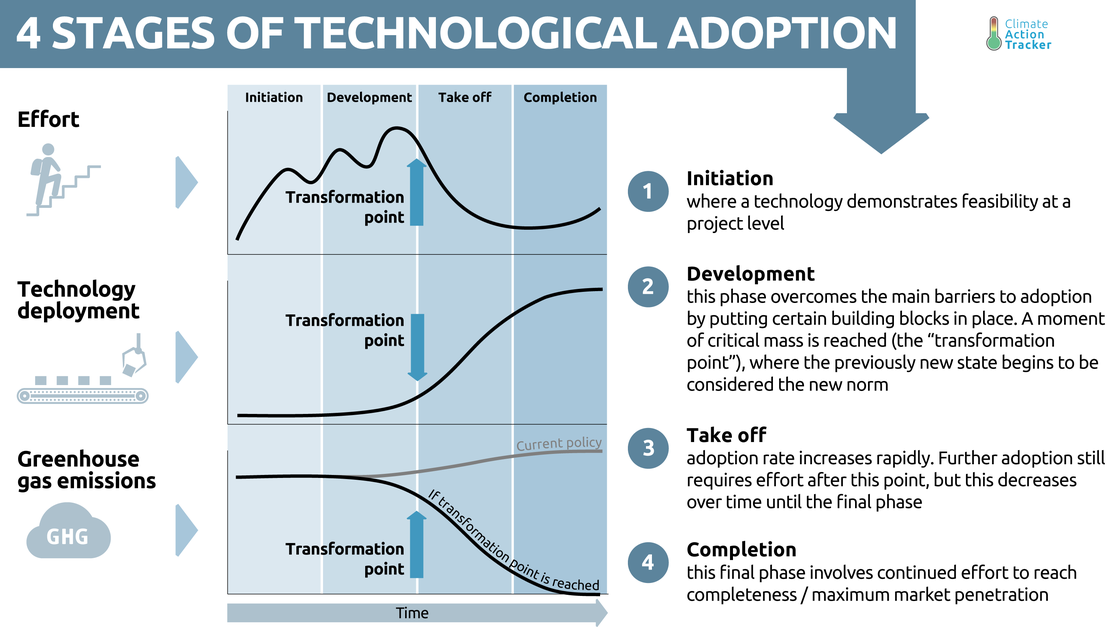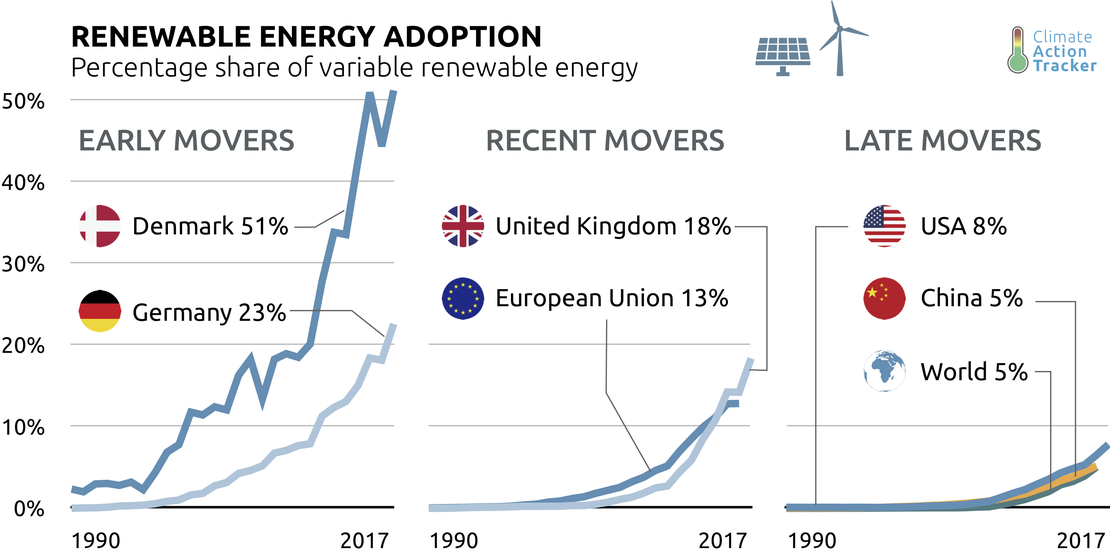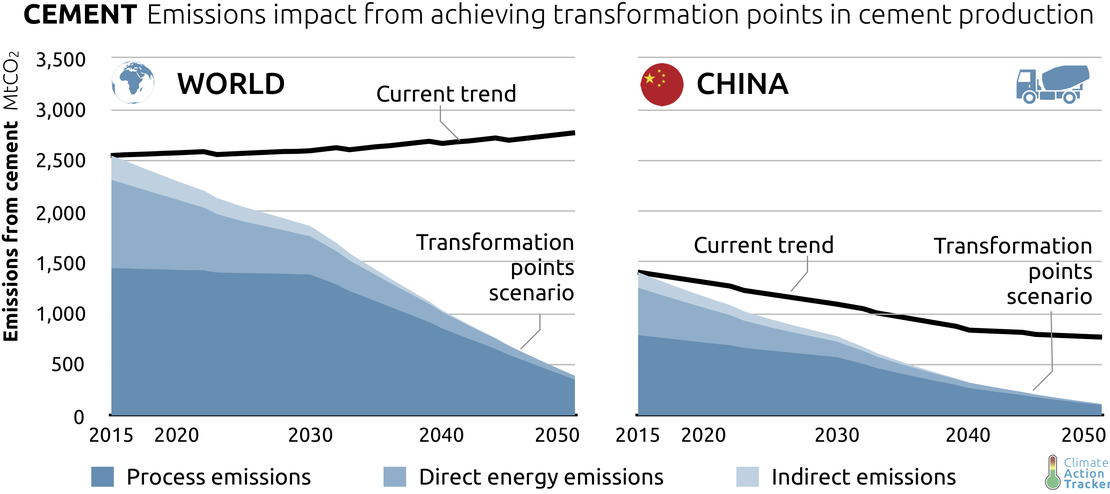Analysis: Transformation points - Achieving the speed and scale required for full decarbonisation
Attachments
Summary
Staying within the Paris Agreement 1.5˚C temperature limit requires rapid, large-scale systemic transformations to fully decarbonise the global energy system by 2050.
Transformations of the speed and scale required have occurred historically when systems reached a transformation point: the moment when a previously novel technology, behaviour or market model achieved critical mass, took off, and rapidly became the new normal. Policy action concerning these transformation points is key to kick-starting a rapid and wide-ranging transformation.
This analysis looks into how different policy actions, at various stages of the technological adoption process, can influence uptake of the many key decarbonisation technologies needed for the future.

Renewable energy and energy storage
A rapid switch to renewable energy, supported by a significant expansion of electricity storage is needed to decarbonise the power sector by the 2040s. By 2050, the world could need up to 475 times more storage capacity than installed today. To increase the likelihood of reaching a transformation point in energy storage, governments can modify market rules to make storage competitive, set targets for storage capacity additions, and invest in R&D for technologies with a focus on inter-seasonal storage.

Electric vehicles
Electric vehicle sales worldwide will need to reach 100% of new sales by around 2035 to decarbonise the passenger transport sector by 2050. To make a transformation point in EV deployment more likely, governments can follow frontrunner examples like Norway and implement financial incentives, install charging infrastructure, and provide other benefits.

Industrial technologies
Industrial emissions need to fall between 65–95% below 2010 levels by 2050 to stay within the 1.5°C limit. Some zero-carbon solutions exist and will need to be scaled up significantly, while many new zero carbon industrial technologies will need to be developed. Governments can work with industry to demonstrate the feasibility of technologies at local level and provide financial incentives to invest in technology deployment.

Webinar recording
Decarbonisation memo series

This memo is a part of the CAT decarbonisation memo series that seeks to address the question: How can different sectors achieve the rapid transformations and emissions reductions required to meet the long-term temperature goals of the Paris Agreement? Click on the link below to read more about the series or click on the icons to see the analysis for each sector.
Stay informed
Subscribe to our newsletter